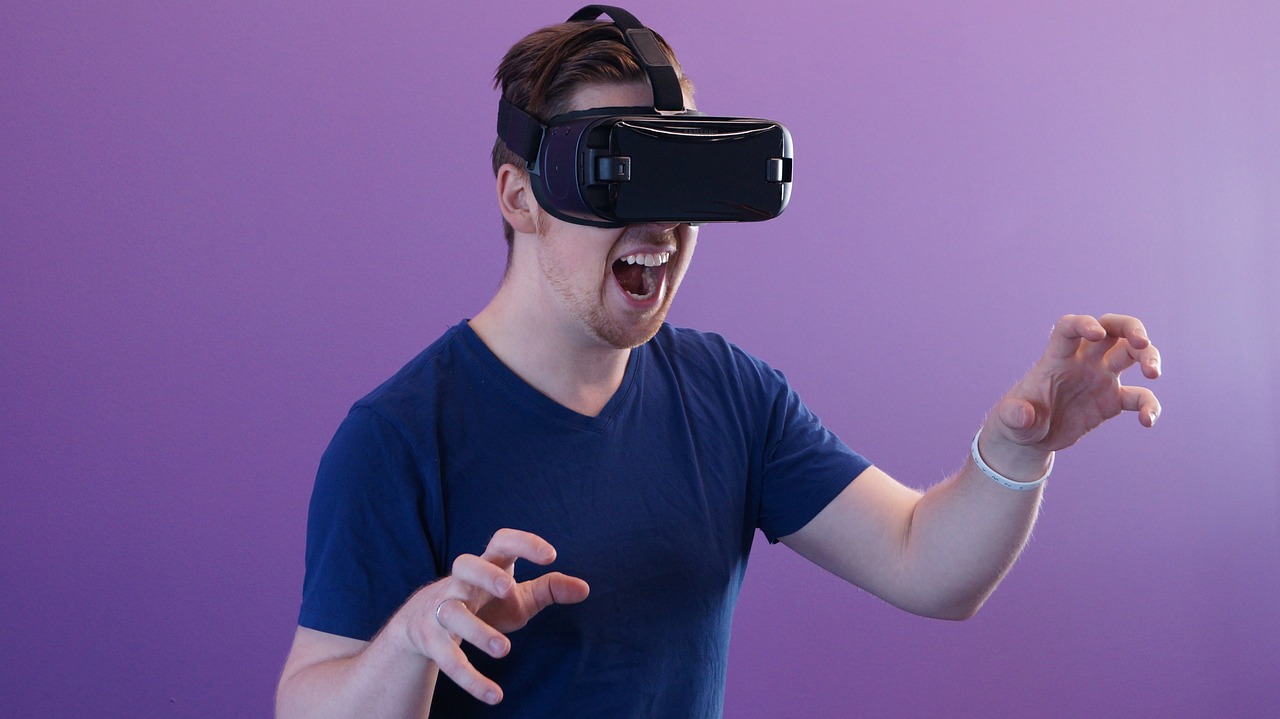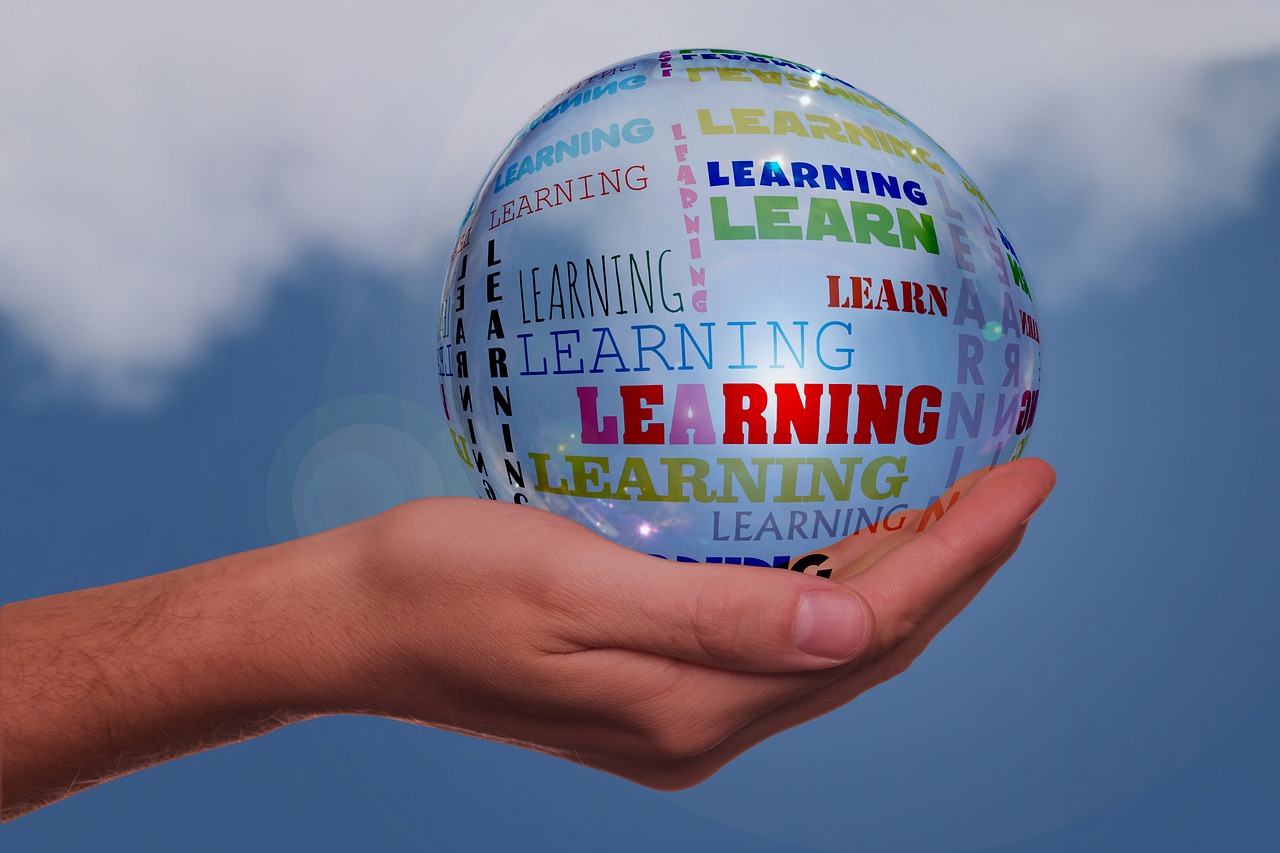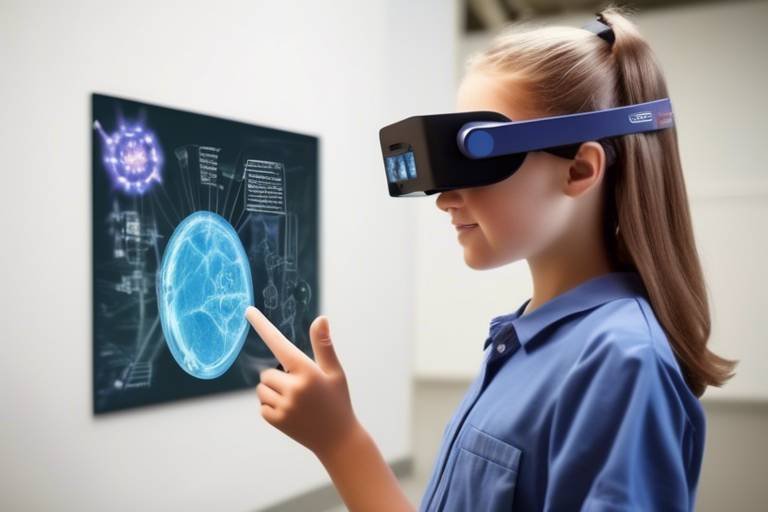How Augmented Reality is Used in Scientific Education
In a world where technology evolves at lightning speed, the classroom is no longer confined to four walls and traditional teaching methods. Enter Augmented Reality (AR), a groundbreaking tool that is reshaping the landscape of scientific education. Imagine being able to explore the intricate structure of a cell or witness a chemical reaction unfold right before your eyes, all without leaving your desk. This article dives deep into how AR is revolutionizing the way we teach and learn science, making complex concepts more accessible and engaging for students.
At its core, augmented reality is a technology that overlays digital information—be it images, sounds, or other data—onto the real world. Think of it as a bridge connecting the virtual and physical realms, creating an interactive experience that enhances learning. The fundamental principles of AR involve using devices like smartphones, tablets, or specialized glasses to project digital content onto the user's environment. This blend of reality and digital elements not only captivates students' attention but also fosters a more profound understanding of scientific concepts.
The advantages of incorporating AR into science education are numerous and significant. One of the most compelling benefits is the increase in student engagement. When students can interact with 3D models of the solar system or manipulate molecular structures, they are more likely to participate actively in their learning journey. Moreover, AR enhances retention rates, as students are more likely to remember what they have experienced firsthand. The ability to visualize complex concepts is another major benefit, allowing students to grasp challenging subjects with ease.
Consider this: learning about the atomic structure of elements can often feel abstract and detached from reality. However, with AR, students can visualize these tiny particles in a way that makes them feel tangible. For instance, when studying chemistry, students can use AR applications to see how atoms bond to form molecules, transforming a textbook definition into a dynamic visual experience. This not only aids in understanding but also ignites curiosity and enthusiasm for scientific inquiry.
One of the most exciting aspects of AR is its ability to create immersive simulations. Imagine a biology class where students can explore the human body layer by layer, observing how organs function in real-time. These interactive simulations allow students to experiment in a safe, virtual environment, making mistakes and learning from them without real-world consequences. This hands-on approach fosters deeper comprehension and retention of scientific principles, as students are actively engaged in their learning process.
AR also excels in bridging the gap between theory and practice. By showcasing real-world applications of scientific concepts, students can see the relevance of what they are learning. For example, AR can illustrate how the principles of physics apply to engineering challenges or how environmental science impacts our daily lives. This connection not only enhances understanding but also prepares students for future careers in science and technology.
Let's face it: traditional teaching methods can sometimes be a snooze fest. However, AR captivates students' attention like never before. By transforming lessons into interactive experiences, AR encourages active participation. Students are not just passive recipients of information; they become explorers and creators in their learning journey. This heightened engagement leads to a more enriching educational experience, where students are motivated to dive deeper into scientific topics.
Despite its tremendous potential, integrating AR into educational settings is not without its challenges. One significant hurdle is the cost associated with AR technology. Schools may find it difficult to allocate funds for the necessary devices and software. Additionally, there are accessibility concerns, as not all students may have access to the required technology. These economic challenges can hinder the widespread adoption of AR in classrooms.
The financial burden of AR technology can limit its adoption in schools, particularly in underfunded districts. While the benefits of AR are clear, the initial investment can be daunting. Schools must weigh the costs against potential educational gains, which can lead to difficult decisions. Furthermore, accessibility remains a critical issue; not all students have equal access to the devices needed to experience AR, creating a disparity in learning opportunities.
Another challenge lies in the need for adequately trained educators. Successful AR implementation requires teachers to be familiar with the technology and its applications in the classroom. Professional development programs are essential to equip educators with the skills they need to effectively integrate AR into their teaching methods. Without proper training, the potential of AR may go untapped, leaving both teachers and students at a disadvantage.
As technology continues to advance, the future of AR in education looks incredibly promising. We can expect to see trends such as more sophisticated AR applications, increased accessibility, and a greater emphasis on teacher training. Innovations in AR technology will likely lead to even more engaging and immersive learning experiences, transforming the way we understand and teach science. The integration of AR in scientific education is not just a trend; it is the beginning of a new era in learning.
- What is Augmented Reality? - AR is a technology that overlays digital information onto the real world, enhancing the learning experience.
- How does AR benefit science education? - AR increases engagement, improves retention, and helps visualize complex scientific concepts.
- What are some challenges of implementing AR in education? - Challenges include cost, accessibility, and the need for teacher training.
- What does the future hold for AR in education? - The future of AR in education is bright, with advancements likely leading to more immersive and engaging learning experiences.

Understanding Augmented Reality
Augmented reality (AR) is a fascinating technology that seamlessly blends digital information with the real world, creating an interactive experience that can significantly enhance learning. Imagine walking through a science lab where, instead of just reading about molecules, you can see them floating in front of you, spinning and interacting in real-time. This is the magic of AR. At its core, AR uses a combination of hardware and software to overlay digital content—such as images, videos, and 3D models—onto the physical environment.
The technology behind AR is rooted in several key components. First, there are tracking systems that identify and monitor the position of real-world objects. This is often achieved through sensors and cameras that gather data about the environment. Next, computer vision algorithms analyze this data to determine where the digital content should be placed. Finally, display technologies, such as smartphones, tablets, or AR glasses, present the augmented experience to the user. Together, these elements create a rich, immersive learning environment that can cater to various educational needs.
One of the most exciting aspects of AR in education is its ability to transform traditional learning methods. For instance, when students study anatomy, they can use AR applications to visualize the human body in 3D, exploring organs and systems in a way that textbooks simply cannot provide. This not only makes learning more engaging but also enhances understanding by allowing students to interact with complex concepts in a tangible way.
Moreover, AR can be categorized into different types based on how it interacts with the real world. These include:
- Marker-based AR: This type uses visual markers, such as QR codes, to trigger the display of digital content.
- Markerless AR: This approach relies on GPS, compass, and accelerometer data to determine the user's location and overlay relevant information.
- Projection-based AR: Here, digital images are projected onto physical surfaces, allowing for interactive experiences without the need for a screen.
As we dive deeper into the realm of AR, it's essential to recognize its potential to revolutionize scientific education. By providing students with interactive and immersive experiences, AR can help demystify complex scientific phenomena, making them accessible and enjoyable. The future is bright for AR in classrooms, and understanding its foundational principles is the first step toward harnessing its full potential.

Benefits of AR in Science Education
Augmented Reality (AR) is not just a buzzword; it’s a game-changer in the realm of science education. Imagine stepping into a classroom where the walls come alive with interactive 3D models of the solar system, or where students can dissect virtual frogs without any mess. This technology allows students to engage with their learning material in ways that were previously unimaginable. The benefits of AR in science education are numerous, and they significantly enhance the overall learning experience.
One of the most remarkable advantages of AR is its ability to increase student engagement. Traditional teaching methods can sometimes make it challenging to capture students' attention, especially when dealing with complex scientific concepts. However, AR transforms passive learning into an active exploration. When students can see and interact with 3D representations of molecules or ecosystems, their curiosity is piqued. They become explorers in their own right, diving into the depths of science with enthusiasm. This active participation often leads to a deeper understanding of the subject matter.
Moreover, AR enhances the visualization of complex concepts. Take chemistry, for example; the structure of atoms and molecules can be abstract and difficult for students to grasp. With AR, students can visualize these structures in a three-dimensional space, allowing them to manipulate and explore them. This tactile experience makes abstract ideas more concrete, bridging the gap between theory and practical understanding. For subjects like physics, AR can demonstrate concepts such as gravity and motion through interactive simulations, making it easier for students to comprehend challenging principles.
AR also opens the door to interactive simulations, where students can conduct experiments in a risk-free virtual environment. Imagine a biology class where students can observe the process of photosynthesis in real-time, manipulating variables to see how they affect the outcome. These immersive simulations not only foster deeper comprehension but also allow students to learn from their mistakes without the fear of real-world consequences. This hands-on approach is invaluable in science education, where experimentation is key.
Furthermore, AR helps to connect classroom learning to the real world. By showcasing real-world applications of scientific concepts, students can see the relevance of what they are learning. For instance, AR can illustrate how physics principles apply to engineering challenges or how biological processes impact environmental conservation. This connection to real-life scenarios makes learning more meaningful and encourages students to think critically about the world around them.
In conclusion, the integration of AR in science education not only enhances visualization and engagement but also fosters interactive learning experiences that prepare students for real-world applications. As the technology continues to evolve, the potential for AR to revolutionize the educational landscape is limitless.
- What is Augmented Reality? - Augmented Reality is a technology that overlays digital information onto the real world, creating interactive experiences.
- How does AR benefit science education? - AR increases engagement, enhances visualization of complex concepts, and allows for interactive simulations, making learning more effective.
- Are there any challenges to implementing AR in education? - Yes, challenges include cost, accessibility, and the need for proper training for educators.
- What subjects can benefit from AR? - While AR is particularly beneficial in science education, it can also enhance learning in subjects like mathematics, history, and art.

Enhancing Visualization of Complex Concepts
In the realm of science education, one of the most daunting challenges educators face is conveying complex concepts in a way that students can easily grasp. Traditional teaching methods often rely on textbooks and lectures, which can sometimes feel like trying to explain the beauty of a sunset through a black-and-white photograph. Enter Augmented Reality (AR), a game-changer that transforms the learning experience by providing a vivid, interactive layer of information that students can engage with directly.
Imagine a classroom where students can see a 3D model of a molecule floating in front of them, rotating slowly, allowing them to examine its structure from every angle. This kind of visualization is not just a fancy trick; it is a powerful educational tool that can make even the most abstract scientific ideas feel tangible and real. With AR, complex topics such as cell biology, chemical reactions, and physical forces can be broken down into manageable, visual components that students can interact with.
For instance, when studying chemistry, students can use AR applications to visualize how atoms bond to form molecules. Instead of memorizing diagrams from textbooks, they can manipulate these virtual models, seeing firsthand how different configurations lead to various chemical properties. This hands-on approach not only enhances understanding but also fosters a sense of curiosity and exploration. Here are some ways AR enhances visualization:
- Interactive Learning: Students can engage with simulations that demonstrate how different variables affect chemical reactions, making learning dynamic and fun.
- Real-Time Feedback: AR can provide instant feedback on students’ actions, helping them understand the consequences of their experiments in a safe environment.
- Accessibility: Visual aids can be tailored to different learning styles, ensuring that every student has the opportunity to grasp difficult concepts.
Moreover, AR can be particularly beneficial in subjects like physics, where understanding forces and motion is crucial. Students can visualize gravitational forces in action or explore the principles of kinematics through interactive simulations that allow them to manipulate variables like speed and angle. This immersive experience not only makes learning more engaging but also helps solidify their understanding of how these principles apply in the real world.
In conclusion, by enhancing the visualization of complex concepts, AR not only makes science education more accessible but also more enjoyable. It transforms the learning process from a passive experience into an active exploration, where students become participants in their education rather than mere observers. As AR technology continues to evolve, the potential for its application in science education seems limitless, paving the way for a future where learning is as engaging as it is enlightening.

Interactive Simulations
Imagine stepping into a world where the laws of physics come to life right before your eyes. powered by augmented reality (AR) are revolutionizing the way students engage with scientific concepts. These simulations create a dynamic learning environment where students can manipulate variables, observe outcomes, and understand complex theories in a way that textbooks simply can't match. It's like having a laboratory at your fingertips, allowing you to experiment without the constraints of time, space, or resources.
For instance, consider a chemistry class where students can visualize molecular structures. With AR, they can rotate and interact with 3D models of molecules, observing how different atoms bond and react under various conditions. This hands-on approach not only makes learning more enjoyable but also enhances retention. Students are far more likely to remember a concept when they can see and touch it, rather than just read about it.
Moreover, these can be tailored to fit various learning styles. Visual learners thrive on the graphical representations, while kinesthetic learners benefit from the hands-on experience of manipulating objects. This adaptability makes AR a powerful tool in catering to diverse educational needs.
Another significant advantage of interactive simulations is their ability to provide instant feedback. Students can experiment with different scenarios and instantly see the results of their actions. This immediate response encourages a deeper understanding of cause and effect, as well as critical thinking skills. For example, if a student alters the angle of a projectile in a physics simulation, they can immediately observe how it affects the trajectory. This real-time interaction fosters a sense of exploration and discovery that is often missing from traditional classroom settings.
In addition, interactive simulations can also incorporate gamification elements, making learning feel like a game rather than a chore. Students can earn points, unlock levels, and even compete with their peers, all while mastering scientific concepts. This gamified approach not only boosts motivation but also encourages collaboration among students, as they work together to solve problems and navigate challenges.
However, it's essential to acknowledge that while the benefits of interactive simulations are substantial, they must be implemented thoughtfully. Teachers need to ensure that these tools align with the curriculum and learning objectives. Additionally, they should provide guidance and support to help students navigate these new technologies effectively. When used properly, interactive simulations can transform the educational landscape, making science accessible, engaging, and fun for all students.
- What are interactive simulations?
Interactive simulations are digital tools that allow students to engage with scientific concepts in a hands-on, immersive way, often using augmented reality technology. - How do interactive simulations enhance learning?
They provide visual representations, instant feedback, and opportunities for experimentation, which helps students grasp complex ideas more easily. - Are interactive simulations suitable for all learning styles?
Yes, they cater to various learning styles by offering visual, auditory, and kinesthetic experiences. - What challenges are associated with implementing interactive simulations in classrooms?
Challenges include the need for adequate technology, teacher training, and aligning simulations with curriculum standards.

Real-World Applications
Augmented Reality (AR) is not just a buzzword; it's a transformative tool that is reshaping how we approach scientific education by providing that make learning more relevant and engaging. Imagine a student in a biology class who can visualize the human body in 3D, rotating it to see how organs interact or even simulating surgeries. This is not science fiction; it's happening right now in classrooms around the globe. AR connects theoretical knowledge with practical experiences, allowing students to see and understand the world through a new lens.
One of the most exciting aspects of AR in education is its ability to simulate complex environments and scenarios. For instance, in environmental science, students can use AR to explore ecosystems without leaving the classroom. They can witness the impact of climate change on polar ice caps or observe the effects of pollution on marine life. This immersive experience is not just about viewing; it's about interacting with the environment in a way that textbooks simply cannot offer.
Moreover, AR can be applied in various fields of science, enhancing learning through practical applications. Here are a few notable examples:
- Chemistry: Students can conduct virtual experiments, mixing chemicals in a safe environment where they can observe reactions without any risk of hazardous spills.
- Physics: AR allows learners to visualize forces and motion through interactive simulations, making abstract concepts like gravity or inertia more comprehensible.
- Geology: By using AR, students can explore geological formations and processes, such as plate tectonics, in a 3D model that they can manipulate and study from different angles.
These applications are not just theoretical; they are being implemented in schools and universities worldwide. For example, institutions are using AR to create virtual field trips, where students can explore historical sites or scientific phenomena without the logistical challenges of travel. This not only saves time and resources but also enhances the learning experience by providing context and a sense of place.
Furthermore, AR can facilitate collaboration among students. Imagine a group project where students from different locations can come together in a shared AR space to conduct experiments or present findings. This fosters teamwork and communication skills, which are vital in today’s interconnected world. With AR, the classroom expands beyond four walls, creating a global learning environment.
In conclusion, the real-world applications of AR in scientific education are vast and varied, transforming how students engage with complex concepts and making learning a more dynamic experience. As technology advances, we can only expect these applications to become more sophisticated, paving the way for a new era in education.

Increasing Student Engagement
Imagine stepping into a classroom where students are not just passive listeners but active participants, their eyes wide with curiosity and excitement. This is the magic of augmented reality (AR) in education! By seamlessly blending the digital world with the real one, AR creates an immersive learning environment that captivates students like never before. Instead of merely reading about scientific concepts, learners can now experience them firsthand, making education feel less like a chore and more like an adventure.
One of the most significant ways AR enhances student engagement is through its ability to turn abstract ideas into tangible experiences. For instance, rather than studying the human anatomy through textbook diagrams, students can use AR applications to explore a 3D model of the human body. They can rotate it, zoom in on specific organs, and even watch how systems interact in real-time. This interactive approach not only grabs attention but also fosters a deeper understanding of complex subjects.
Furthermore, AR encourages collaboration among students. Imagine a group project where students can work together to solve a scientific problem using AR tools. They can share their findings in a virtual space, discuss their observations, and even compete in friendly challenges. This collaborative aspect not only enhances engagement but also builds essential teamwork skills that are crucial in today’s scientific landscape.
Additionally, AR can cater to various learning styles, making it an inclusive tool for diverse classrooms. Some students may grasp concepts better through visual stimulation, while others might prefer hands-on activities. AR accommodates these differences, offering a range of interactive experiences that appeal to visual, auditory, and kinesthetic learners alike. This personalized approach can significantly increase student motivation and participation.
Moreover, the gamification of learning through AR applications can also play a vital role in boosting engagement. Many AR tools incorporate game-like elements, such as rewards, challenges, and levels, transforming learning into an enjoyable experience. When students are rewarded for their progress, they are more likely to stay focused and motivated. This sense of achievement can be a powerful driver for continued learning and exploration.
To summarize, augmented reality is not just a flashy tool; it’s a revolutionary approach to education that increases student engagement in multiple ways:
- Creates immersive learning experiences
- Encourages collaboration and teamwork
- Cater to different learning styles
- Incorporates gamification to enhance motivation
As educators continue to explore the potential of AR, the possibilities for increasing student engagement are virtually limitless. With each new application, we move closer to a future where learning is not only informative but also incredibly exciting!

Challenges of Implementing AR in Education
While the potential of Augmented Reality (AR) in education is indeed exciting, it's essential to recognize that its implementation isn't without challenges. Many educational institutions are eager to adopt this transformative technology, but various obstacles can hinder its effective integration into classrooms. Understanding these challenges is crucial for educators and administrators who wish to harness the full power of AR.
One of the most significant hurdles is the cost associated with AR technology. High-quality AR tools, such as headsets, software licenses, and interactive devices, can be expensive. Many schools, particularly those in underfunded districts, may struggle to allocate budget for such cutting-edge resources. This financial burden can create a disparity between schools that can afford AR and those that cannot, leading to unequal educational opportunities.
In addition to cost, accessibility poses another challenge. Not all students have equal access to the necessary technology, such as smartphones or tablets, which are often required for AR experiences. This digital divide can prevent some students from fully participating in AR-enhanced lessons, further exacerbating educational inequalities. It's crucial for schools to find solutions that ensure all students can engage with AR content, regardless of their socioeconomic status.
Moreover, the successful implementation of AR in education heavily relies on teacher training. Educators need to be adequately trained not only in how to use AR tools but also in how to integrate them effectively into their teaching practices. Without proper professional development, teachers may feel overwhelmed or unsure about how to utilize AR to its fullest potential. This lack of training can lead to underutilization of available resources, diminishing the impact AR could have on student learning.
To address these challenges, educational institutions must take a proactive approach. Here are some strategies that can help:
- Seek grants and funding opportunities specifically aimed at technology integration in education.
- Implement community partnerships to share resources and access to AR technology.
- Invest in comprehensive training programs for educators to build confidence and competence in using AR.
In conclusion, while the challenges of implementing AR in education are significant, they are not insurmountable. By addressing cost, accessibility, and training issues, schools can create an environment where AR can thrive, ultimately enhancing the educational experience for all students.
Q: What are the main challenges of implementing AR in education?
A: The main challenges include high costs, accessibility issues for students, and the need for adequate teacher training.
Q: How can schools overcome the cost barrier associated with AR technology?
A: Schools can look for grants, community partnerships, and shared resources to help mitigate the financial burden of AR technology.
Q: Why is teacher training important for the successful implementation of AR?
A: Teacher training is crucial because educators need to know how to effectively use AR tools and integrate them into their teaching strategies to enhance student learning.

Cost and Accessibility Issues
When we talk about the integration of Augmented Reality (AR) in education, one of the most pressing concerns is undoubtedly the cost and accessibility associated with this technology. While AR has the potential to revolutionize scientific education, its implementation often comes with a hefty price tag that can be a barrier for many educational institutions. Schools and universities may find themselves in a predicament, trying to balance their budgets while wanting to provide the best learning experiences for their students. The initial investment in AR hardware, software, and the necessary infrastructure can be overwhelming, especially for underfunded schools.
Moreover, accessibility is not just about having the technology; it's also about ensuring that all students can benefit from it. Many schools, particularly in rural or economically disadvantaged areas, may lack the necessary resources to implement AR effectively. This creates a significant divide in educational opportunities, leaving some students without access to the enhanced learning experiences that AR offers. The digital divide is a real concern, and it raises the question: how can we ensure that all students, regardless of their background, have access to these innovative learning tools?
To illustrate the financial implications, consider the following table that breaks down potential costs associated with AR in education:
| Item | Estimated Cost |
|---|---|
| AR Software Licenses | $500 - $5,000 per year |
| AR Devices (e.g., tablets, smart glasses) | $200 - $2,000 each |
| Training for Educators | $1,000 - $10,000 |
| Maintenance and Updates | $300 - $1,000 per year |
This table highlights just a few of the costs involved, and when you multiply these figures by the number of students or classrooms, the total can quickly escalate. Schools must carefully consider their budgets and explore funding opportunities, such as grants or partnerships with tech companies, to make AR a reality in their classrooms.
Furthermore, the need for training educators to effectively use AR tools cannot be overstated. Even if a school can afford the technology, without properly trained teachers, the potential of AR may go untapped. Professional development programs are essential to equip educators with the necessary skills to integrate AR into their curriculum. This training often requires additional funding, which can further complicate the financial landscape.
In summary, while AR holds incredible promise for enhancing scientific education, the challenges of cost and accessibility pose significant hurdles. Addressing these issues will require collaboration among educators, policymakers, and technology providers to create equitable solutions that ensure all students can benefit from the wonders of augmented reality.

Training Educators
Integrating augmented reality (AR) into the educational landscape is not just about having the latest gadgets or software; it's heavily reliant on the skills and knowledge of educators. Without properly trained teachers, even the most sophisticated AR tools can fall flat in their effectiveness. So, what does it take to prepare educators for this technological leap? The answer lies in a comprehensive training approach that encompasses various aspects of AR technology, pedagogical strategies, and continuous professional development.
First and foremost, educators need to understand the fundamental principles of augmented reality. This includes grasping how AR works, the different types of AR applications available, and how these can be effectively integrated into the curriculum. Professional development programs should focus on hands-on training, enabling teachers to interact with AR tools and explore their functionalities. This practical experience is crucial because it allows educators to envision how they can apply AR in their classrooms.
Moreover, training should emphasize the creation of engaging lesson plans that incorporate AR elements. Educators should be equipped with the skills to design interactive and immersive experiences that not only capture students' attention but also align with educational standards. This could involve workshops where teachers collaborate to develop AR-based lessons, share best practices, and troubleshoot challenges together.
In addition to technical training, it's essential to foster a mindset of innovation and adaptability. The world of technology is ever-evolving, and educators must be prepared to adapt to new tools and methods. This can be achieved through ongoing professional development opportunities, such as webinars, online courses, and AR-focused conferences. By participating in these activities, teachers can stay updated on the latest trends and innovations in AR and education.
Furthermore, creating a supportive community among educators can significantly enhance the training process. Schools and districts should encourage collaboration by establishing peer mentoring programs, where experienced teachers can guide their less experienced counterparts in utilizing AR effectively. This not only builds confidence but also creates a culture of sharing and continuous improvement within the educational environment.
Lastly, it's vital to address the accessibility of training resources. Schools need to ensure that all educators have equal access to training opportunities, regardless of their geographical location or the resources available at their institutions. Online platforms can play a crucial role in this, offering flexible training modules that teachers can complete at their own pace. By making training accessible, schools can empower all educators to harness the full potential of AR in their teaching practices.
In conclusion, the success of augmented reality in education hinges on the readiness and capability of educators. By investing in comprehensive training programs, fostering collaboration, and ensuring accessibility, we can equip teachers with the tools they need to transform scientific education through AR. This investment not only benefits educators but also enriches the learning experience for students, paving the way for a more engaging and interactive educational landscape.
- What is augmented reality in education?
Augmented reality (AR) in education refers to the use of digital overlays in the real world to enhance learning experiences, making complex concepts more accessible and engaging for students. - How can AR benefit science education?
AR can enhance visualization, facilitate interactive simulations, and connect theoretical concepts to real-world applications, thus improving student engagement and retention. - What challenges do educators face when implementing AR?
Challenges include the cost of technology, accessibility issues, and the need for adequate training for educators to effectively use AR tools. - What types of training are available for educators?
Training can include hands-on workshops, online courses, peer mentoring programs, and participation in AR-focused conferences. - How can schools ensure equal access to AR training?
By providing online training resources and flexible learning options, schools can make AR training accessible to all educators regardless of their location or resources.

The Future of AR in Scientific Education
As we look ahead, the future of Augmented Reality (AR) in scientific education appears to be not just bright but positively revolutionary. Imagine stepping into a classroom where the walls come alive with interactive 3D models of the solar system or the human body, where students can manipulate molecular structures with a simple swipe of their fingers. This is not a distant dream; it is rapidly becoming a reality. With advancements in technology, AR is poised to transform the way we teach and learn science, making it more engaging and effective than ever before.
One of the most exciting prospects of AR in education is the potential for personalized learning experiences. As AR applications become more sophisticated, they will be able to adapt to the individual learning styles and paces of students. For instance, a student struggling with the concepts of Newtonian physics could engage with tailored simulations that allow them to visualize and manipulate forces in real-time. This level of customization not only enhances understanding but also boosts confidence, as students can learn at their own pace without the pressure of keeping up with their peers.
Furthermore, the integration of AR with other emerging technologies, such as artificial intelligence (AI) and machine learning, will create even more dynamic educational environments. Imagine a scenario where an AI tutor, equipped with AR capabilities, can assess a student's understanding in real-time and provide instant feedback or additional resources tailored to their needs. This synergy could lead to an unprecedented level of engagement and comprehension in scientific subjects.
However, it’s essential to acknowledge that the widespread adoption of AR in education will require significant investment and infrastructure development. Schools and educational institutions will need to prioritize funding for AR technologies and ensure that they have the necessary hardware and software to support these innovations. Additionally, internet connectivity will play a critical role; reliable access will be essential for the seamless integration of AR into the curriculum.
In terms of curriculum development, educators will need to collaborate with technologists to create high-quality AR content that aligns with educational standards and learning objectives. This collaboration can lead to the creation of a rich library of AR resources that can be utilized across various scientific disciplines. As more educators become familiar with AR tools, we can expect to see a surge in creativity and innovation in lesson planning, making science education not just informative but also exhilarating.
Lastly, as AR technology continues to evolve, we can anticipate the emergence of new platforms that make AR content more accessible to both educators and students. These platforms will likely feature user-friendly interfaces that allow teachers to create their own AR experiences without needing extensive technical knowledge. This democratization of AR technology will empower educators to bring their unique visions into the classroom, fostering a culture of exploration and discovery.
In conclusion, the future of AR in scientific education is not just about enhancing the learning experience; it is about redefining it. As we embrace this technology, we can expect to see a transformation in how students interact with scientific concepts, ultimately leading to a deeper understanding and appreciation of the sciences. The journey ahead is filled with possibilities, and it is an exciting time to be involved in the field of education.
- What is Augmented Reality (AR)?
AR is a technology that overlays digital information, such as images and sounds, onto the real world, enhancing the user's perception of their environment.
- How does AR benefit science education?
AR enhances visualization, increases engagement, and allows for interactive simulations, making complex scientific concepts more accessible and understandable for students.
- What are the challenges of implementing AR in education?
Challenges include the cost of technology, accessibility issues, and the need for proper training for educators to effectively use AR tools.
- What does the future hold for AR in education?
The future of AR in education includes personalized learning experiences, integration with AI, and the development of user-friendly platforms for educators to create AR content.
Frequently Asked Questions
- What is Augmented Reality (AR) in education?
Augmented Reality (AR) in education refers to the integration of digital information with the real world to create interactive learning experiences. It allows students to visualize and interact with complex concepts in a more engaging way, enhancing their understanding of scientific principles.
- How does AR enhance visualization of scientific concepts?
AR enhances visualization by overlaying digital models and simulations onto real-world objects. For instance, in a chemistry class, students can see molecular structures in 3D, making abstract ideas more concrete and easier to grasp.
- What are some benefits of using AR in science education?
Some key benefits of using AR in science education include increased student engagement, improved retention of information, and the ability to conduct interactive simulations. These features help make learning more enjoyable and effective.
- Are there any challenges in implementing AR in classrooms?
Yes, there are several challenges, including high costs of AR technology, accessibility issues for students, and the need for teacher training. These factors can hinder the widespread adoption of AR in educational settings.
- How can teachers be trained to use AR effectively?
Teachers can be trained through professional development programs that focus on AR technology and its applications in the classroom. Access to resources, workshops, and hands-on training can equip educators with the necessary skills to integrate AR into their teaching.
- What is the future of AR in scientific education?
The future of AR in scientific education looks bright, with ongoing advancements in technology. Innovations are expected to enhance the interactivity and accessibility of AR tools, making them an integral part of the learning experience in the coming years.



















